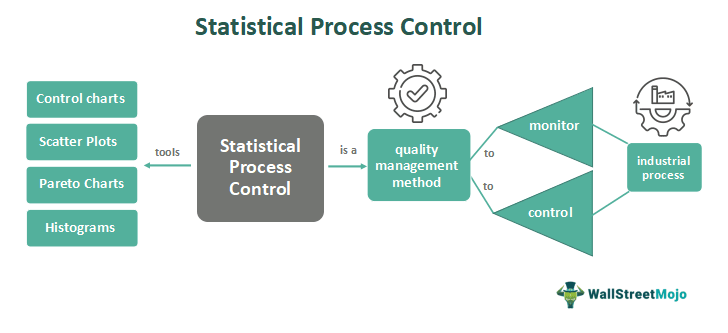Let us look at the differences between Statistical Process Control (SPC) and Statistical Quality Control (SQC):
Table Of Contents
Statistical process control (SPC) is a method used in quality management to monitor and control industrial processes through statistical techniques. The purpose of SPC is twofold: first, it enables the detection of process variations in real-time, allowing for immediate corrective actions to prevent defects. Second, it provides valuable insights into the overall process performance.

SPC ensures product quality, enhances customer satisfaction, and increases operational efficiency. By monitoring process parameters, identifying trends, and detecting anomalies, SPC helps organizations maintain process control, minimize defects, and achieve consistent output. It provides a scientific and data-driven approach to quality management, supporting informed decision-making and fostering a culture of continuous improvement.
Key Takeaways
Statistical Process Control (SPC) is a methodology to monitor and control industrial processes. It involves applying statistical techniques to analyze data collected during production to understand and improve process performance.
Statistical techniques are used to identify and eliminate variations that could lead to defects or non-conformities. SPC is widely employed across various industries to ensure consistent product quality and process stability.
The core principle of SPC is that most process variations can be categorized as either common cause variations or special cause variations. Common cause variations are inherent to the process and expected to occur within certain limits. In contrast, special cause variations are caused by identifiable factors not part of the normal process.
Let us look at the steps involved in implementing SPC:
Let us look at important tools utilized in SPC:
Let us look at examples to understand the concept better.
As per an article by QualityMag, implementing Statistical Process Control (SPC) can be advantageous for manufacturers facing high process variation and overfill. Since, SPC allows manufacturers to gain insights into the true sources of variation, leading to permanent corrective actions and cost savings in their operations. By utilizing Xbar/R Control Charts, a specific SPC method, manufacturers can effectively reduce fill weight variation, maintain centerlines, and minimize the need for rework.
While capability analysis and SPC methods significantly reduce overfill, it is crucial to supplement these approaches with lean tools, techniques, and methods. Incorporating these charts with lean principles helps foster a continuous flow of materials, increases equipment uptime, and decreases changeover time. Through this combined effort, manufacturers can achieve savings and improve overall throughput.
Let us consider a beverage manufacturing company that produces carbonated soft drinks and wants to ensure consistent carbonation levels in its products. Thus, to implement SPC, the company sets up a monitoring system that regularly collects data on the carbonation level of randomly selected bottles from the production line. The collected data is then analyzed using statistical techniques.
Over time, the SPC analysis reveals occasional variations in the carbonation level, indicating a potential issue in the production process. The company identifies a specific machine responsible for injecting carbon dioxide into the beverages and notices that it occasionally malfunctions, resulting in higher or lower carbonation levels.
With this information, the company takes immediate corrective action, such as repairing or calibrating the malfunctioning machine whenever a deviation is detected. The company can promptly address these variations and maintain the desired carbonation level, ensuring consistent product quality. Additionally, the SPC data allows the company to track the performance of the carbonation process over time, identify trends, and make process improvements.
Let us look at the advantages of Statistical Process Control (SPC):
Let us look at the disadvantages of Statistical Process Control (SPC):
Let us look at the differences between Statistical Process Control (SPC) and Statistical Quality Control (SQC):
| Parameters | Statistical Process Control (SPC) | Statistical Quality Control (SQC) |
|---|---|---|
| 1. Focus | Control and monitoring of individual processes | Overall quality management and control of multiple processes |
| 2. Scope | A narrow focus on a specific process or operation | Broader focus on the entire quality management system |
| 3. Purpose | Monitor process variations and ensure process control | Monitor and improve overall product/service quality |
| 4. Data Collection | Collects and analyzes data from a single process | Collects and analyzes data from multiple processes |
| 5. Statistical Tools | Control charts, histograms, scatter plots, etc. | Pareto charts, cause-and-effect diagrams, etc. |
| 6. Control Limits | Set based on process-specific variability | Set based on quality standards and customer requirements |
| 7. Key Application | Monitoring and controlling individual process variables such as temperature, pressure, etc. | Ensuring overall product quality, customer satisfaction, and adherence to quality standards. |